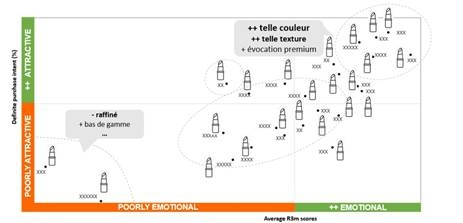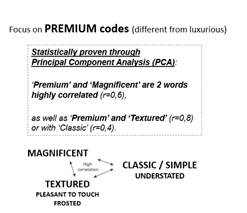/reboot/media/cb1ca522-65d6-11ef-8660-0242ac120010/7c5a6760-873d-11f0-8866-1a3d8e5696a4/1-1-1756735847499.png)
Case study: Decoding the winning codes of premium lipstick packaging in China
In the world of luxury goods, packaging is not just a simple container: it becomes a major emotional vehicle, capable of triggering desire, differentiation and the act of purchasing.
Through a study conducted for a luxury cosmetics company, Repères shares its sophisticated and operational approach to packaging testing, combining emotional and rational measurements.
The client brief: objectify the emotional codes of luxury packaging in China
In the Chinese premium lipstick market, packaging plays a central role in product perception and consumer emotional engagement. Our client wanted to:
- Identify the best existing packaging on the market among Chinese users
- Understand the emotional triggers specific to this market
- Gain concrete and directly actionable insights to optimise its own packaging designs.
Our solution: an agile, robust and discriminating protocol
To address this issue, we developed a methodology based on several pillars:
- A wide range of stimuli tested: 24 lipstick packages evaluated under handling conditions to maximise real sensory anchoring.
- In‑hall Quantitative fieldwork: with 120 consumers of premium lipsticks, spread over two quick sessions (15 to 20 minutes each).
- Dual emotional and rational measurement:
- Purchase intent (rational projection measurement)
- R3m score (proprietary emotional measurement developed over three years of R&D)
The core of the approach: capturing the emotional aspect via the R3m Score
Because a simple declarative response is not always enough to predict purchasing behaviour, we have incorporated an in‑depth emotional analysis into our protocol. This is based on:
- A spontaneous collection of three words evoked by each piece of packaging.
- A proprietary emotional scoring algorithm that transforms verbatim responses into indicators of emotional activation.
This emotional reading provides:
- A more refined assessment of performance,
- Identification of the elements that really stand out and have an impact on consumers.
Immediately actionable results
Cross‑analysis of emotional scores and purchasing intents has made it possible to:
- Map the positioning of different packaging designs (winners, underperformers, areas for optimisation).
- Identify promising visual and sensory drivers: colours, shapes, materials, design, opening system, weight, feel, salient elements, etc.
- Better understand associations of ideas through correlation analyses of spontaneous words, refining the understanding of perceived emotional territories.


Concrete recommendations for the client
The results directly contributed to:
- Design optimisation ideas (adjustments to colours, materials, opening system, etc.),
- Useful differentiation choices for the brand,
- Identification of risks to avoid in terms of projected image.
An easily reproducible and iterative approach
Our protocol also allows us to:
- Quickly retest new optimised packaging and visualise progress,
- Cross‑reference results with other markets to identify cultural variations,
- Integrate cross‑sensory analysis with R&D teams for even more robust and concrete recommendations.
Thanks to this approach combining sensory analysis, emotion and analytical rigour, Repères supports luxury brands in securing their design choices, in line with their consumers' expectations.
/reboot/media/cb1ca522-65d6-11ef-8660-0242ac120010/cfdfa59a-8737-11f0-8a4f-1a3d8e5696a4/1-1-1756733410582.png)
/reboot/media/cb1ca522-65d6-11ef-8660-0242ac120010/e90e2006-4618-11f0-a1c7-ca83f24d1f3e/1-1-person-holding-dropper-80wckpt-ike.jpg)
/reboot/media/cb1ca522-65d6-11ef-8660-0242ac120010/852fa904-3d01-11ef-b74b-0242ac120012/1-1-download.png)